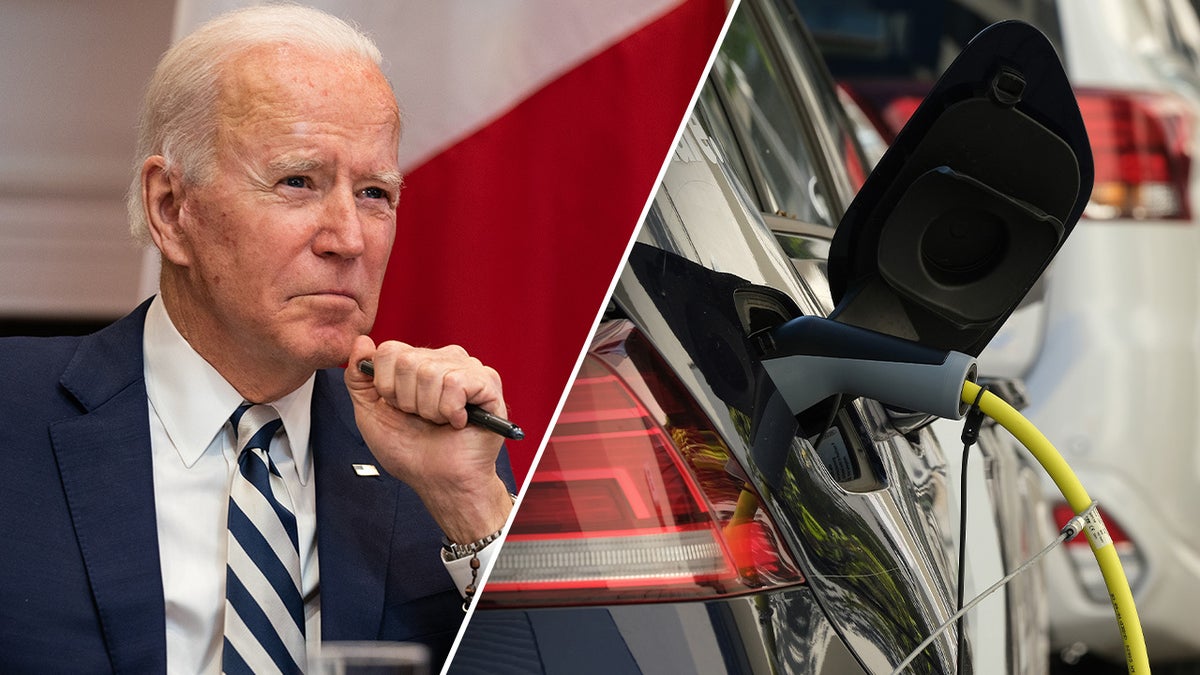Dealers Double Down: Fighting Back Against EV Mandates

Table of Contents
The Economic Challenges of EV Mandate Compliance
The implementation of EV mandates presents a complex web of economic challenges for car dealerships, threatening their profitability and even their long-term viability. These challenges are primarily centered around significant upfront investment costs and the difficulties of managing shifting consumer demand and inventory.
High Upfront Investment Costs
Compliance with EV mandates requires substantial capital expenditure for dealerships. Upgrading infrastructure to accommodate electric vehicles involves considerable costs across various areas.
- Charging Station Installation: Installing Level 2 and potentially Level 3 DC fast chargers requires significant electrical upgrades, specialized equipment, and ongoing maintenance. Estimates range from several thousand dollars for a single Level 2 charger to tens of thousands for a fast-charging station.
- Specialized EV Technician Training: EVs require specialized knowledge and tools for repair and maintenance, necessitating training programs for existing technicians and potentially hiring new, qualified personnel. This includes training on high-voltage systems, battery diagnostics, and specialized software.
- Inventory Management Changes: Managing both gasoline and electric vehicle inventories necessitates new logistical systems and potentially more warehouse space to accommodate different vehicle types, battery storage, and charging needs.
The average cost of EV infrastructure upgrades for a medium-sized dealership is estimated to be between $100,000 and $500,000, posing a significant financial burden, especially for smaller, independent dealerships. Access to affordable financing and government support programs is crucial but often insufficient to cover these costs.
Shifting Consumer Demand and Inventory Management
Predicting consumer demand for electric vehicles remains a significant challenge. Dealerships face the risk of overstocking EVs if consumer adoption is slower than anticipated, leading to losses on unsold inventory and tying up valuable capital. Conversely, underestimating demand could result in lost sales and dissatisfied customers.
- Difficulty in Predicting EV Sales: Fluctuations in fuel prices, government incentives, and technological advancements all impact consumer preferences, making accurate forecasting incredibly difficult.
- Potential for Overstocking EVs or Gasoline Vehicles: Balancing inventory between gasoline and electric vehicles requires sophisticated forecasting models and a flexible approach to stock management.
- Impact on Profit Margins: The higher upfront cost of EVs and the potential for slower sales compared to gasoline vehicles can significantly impact profit margins, squeezing dealerships' already tight operating budgets.
- Risk of Obsolescence: Gasoline vehicle inventory may become less desirable as EV mandates tighten and consumer preference shifts, leading to potential losses on unsold stock. The logistics of managing the different inventory types and service requirements add another layer of complexity.
Strategies Dealerships are Employing to Counter EV Mandates
Faced with these significant economic challenges, dealerships are employing various strategies to adapt to or mitigate the impact of EV mandates. These strategies range from direct political action to adapting their business models and focusing on consumer education.
Lobbying and Political Action
Dealership associations are actively engaged in lobbying efforts to influence legislation and push back against what they perceive as overly aggressive or unrealistic EV mandates. These efforts include:
- Direct Lobbying: Engaging with state and federal lawmakers to advocate for more realistic timelines, greater financial support, and consideration of the economic impact on dealerships.
- Legal Challenges: Challenging mandates in court, arguing that they are economically unfeasible or infringe on their rights.
- Public Awareness Campaigns: Educating the public about the challenges faced by dealerships and advocating for a balanced approach to the transition to electric vehicles.
Organizations like the National Automobile Dealers Association (NADA) play a crucial role in coordinating these efforts, providing a unified voice for the industry. However, the effectiveness of these strategies varies depending on the political landscape and the strength of the lobbying efforts.
Adapting Business Models
Many dealerships are proactively adapting their business models to accommodate the shift towards electric vehicles and create new revenue streams. These adaptations include:
- Investment in EV Service and Repair: Training technicians, investing in specialized equipment, and developing expertise in EV maintenance and repair to capitalize on the growing demand for these services.
- Partnerships with Charging Network Providers: Collaborating with charging network operators to integrate charging infrastructure into their facilities, potentially generating revenue through charging fees or partnerships.
- Focus on Customer Education: Developing educational programs and resources to address consumer concerns about EVs, including range anxiety, charging infrastructure availability, and maintenance.
Focusing on Consumer Education and Addressing Range Anxiety
Addressing consumer concerns about range anxiety and the availability of charging infrastructure is crucial for driving EV adoption. Dealership strategies include:
- Test Drive Programs: Offering extensive test drives to allow potential customers to experience EVs firsthand and overcome their apprehension.
- Educational Seminars and Workshops: Providing educational resources and workshops to inform customers about the benefits and practical aspects of EV ownership.
- Showcasing Charging Solutions: Highlighting the availability of charging infrastructure, either at the dealership or through partnerships with charging networks.
- Utilizing Technology: Leveraging route-planning apps and other technologies that help alleviate range anxiety by providing real-time information on charging station locations and driving range.
Conclusion
EV mandates present significant economic challenges for car dealerships, requiring substantial upfront investments and necessitating adaptation to shifting consumer demands. Dealerships are responding through lobbying efforts, business model adaptations, and focused consumer education. The economic implications are substantial, and the ongoing political battles highlight the complexities of this transition. Understanding the complexities surrounding EV mandates is crucial for the future of the automotive industry. Stay informed and join the conversation about the impact of electric vehicle regulations and zero-emission vehicle policies on the automotive retail landscape.

Featured Posts
-
 Inspiracion Otonal Charlene De Monaco Y El Arte De Lucir Lino
May 26, 2025
Inspiracion Otonal Charlene De Monaco Y El Arte De Lucir Lino
May 26, 2025 -
 Investigating The Hells Angels A Deeper Dive
May 26, 2025
Investigating The Hells Angels A Deeper Dive
May 26, 2025 -
 Relay Race Victory Earns T Bird Girls Home Invite
May 26, 2025
Relay Race Victory Earns T Bird Girls Home Invite
May 26, 2025 -
 Armando Iannuccis Creative Evolution A Look At Shifting Satirical Styles
May 26, 2025
Armando Iannuccis Creative Evolution A Look At Shifting Satirical Styles
May 26, 2025 -
 Le Grand Cactus Le Csa Tranche Apres Une Polemique Sur Un Sketch
May 26, 2025
Le Grand Cactus Le Csa Tranche Apres Une Polemique Sur Un Sketch
May 26, 2025
Latest Posts
-
 Kochanowiczs Costly Inning Angels Lose To Yankees
May 28, 2025
Kochanowiczs Costly Inning Angels Lose To Yankees
May 28, 2025 -
 Angels Explode For Six In Eighth Defeat Blue Jays
May 28, 2025
Angels Explode For Six In Eighth Defeat Blue Jays
May 28, 2025 -
 One Bad Inning Dooms Kochanowicz Angels Fall To Yankees
May 28, 2025
One Bad Inning Dooms Kochanowicz Angels Fall To Yankees
May 28, 2025 -
 Los Angeles Rivalry Angels Victory Over Dodgers Highlights Shortstop Issues
May 28, 2025
Los Angeles Rivalry Angels Victory Over Dodgers Highlights Shortstop Issues
May 28, 2025 -
 Al West Showdown Angels Outlast Dodgers Without Key Shortstops
May 28, 2025
Al West Showdown Angels Outlast Dodgers Without Key Shortstops
May 28, 2025
